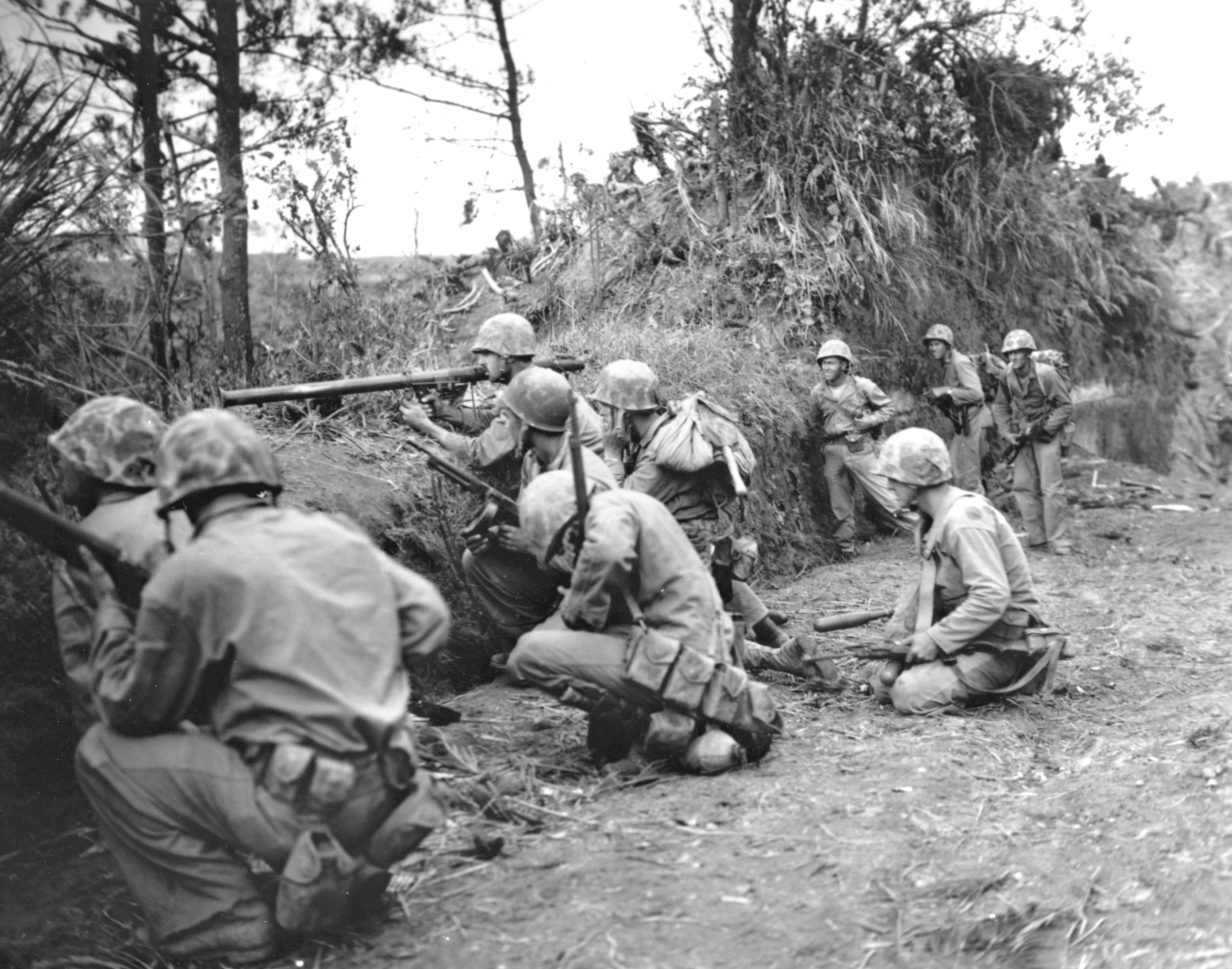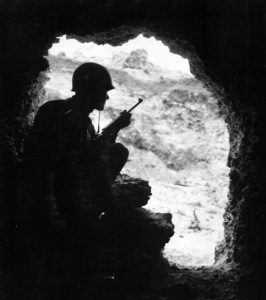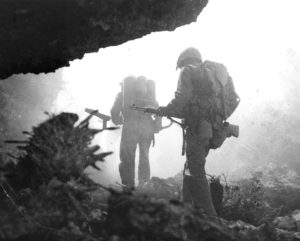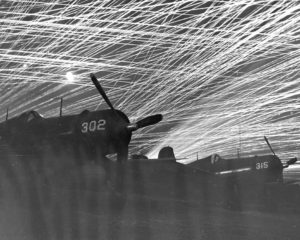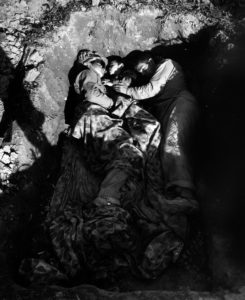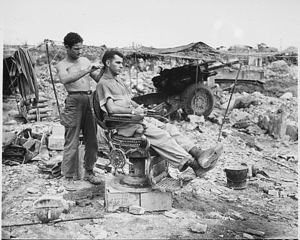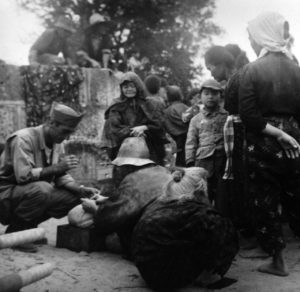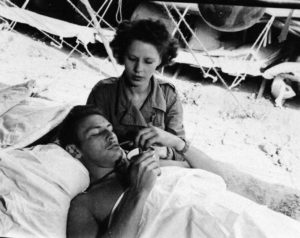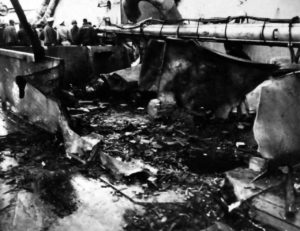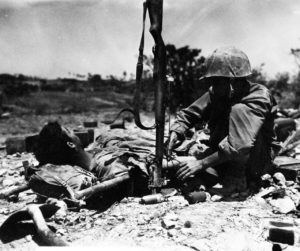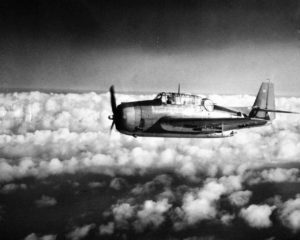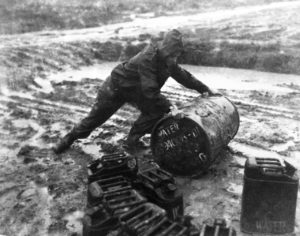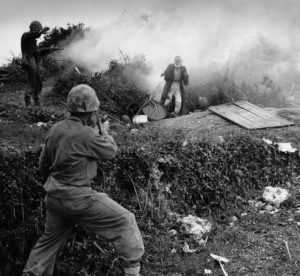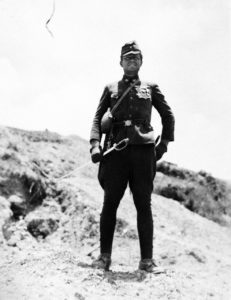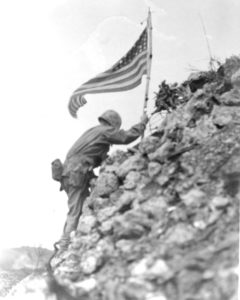On April 1, 1945, approximately 60,000 U.S. Marines and soldiers of the U.S. Tenth Army wade ashore from landing craft onto the beaches of Okinawa. The battle that follows is the largest Allied amphibious landing in the Pacific theater and the final island battle of the Pacific.
Army and Marine divisions seek to wrest the island from Japanese control to sever the last southwest supply line to mainland Japan, while establishing the island as a base for American medium bombers.
American progress during the nearly three-month battle, dubbed the “Typhoon of Steel” due to its ferocity, is hindered by heavy rains and rugged terrain.
Like the bloodletting on Iwo Jima, the vicious air, land, and sea battle gives American military planners pause when contemplating future amphibious assaults.
The grisly battle concludes in an American victory, as the tenacious and desperate Japanese defenders — 155,000 strong — are overpowered by American manpower and material strength.
But it comes at a cost.
By battle’s end on June 22, there are more than 49,000 American casualties, including nearly 12,000 fatalities. An estimated 90,000 Japanese combatants die in the fighting. A staggering 150,000 Okinawan civilians also perish.

